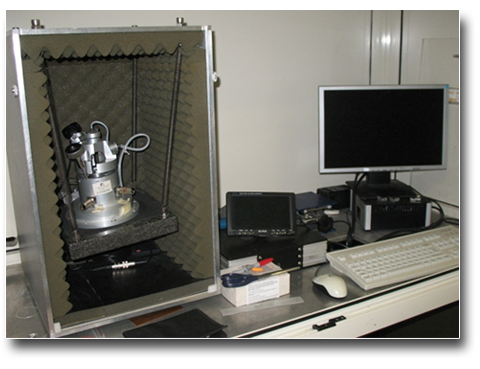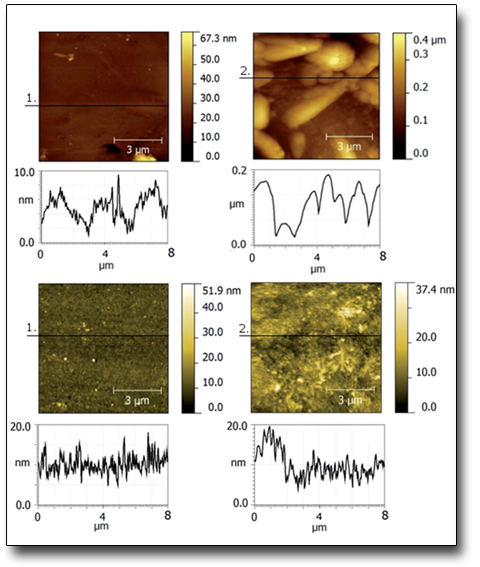
TECHNICAL SPECIFICATIONS
- Scanner 10µm*10µm
- Scanner 30µm*30µm
- In house developed electronics
- Free Gwiddion software for data anlysis
- Different tips according to requested experimental setup
AVAILABLE TECHNIQUES
- Contact mode, tapping mode and non-contact mode imaging
- Topography and phase shift imaging
- Endless multi-mapping mode
SAMPLE
- Films max dimensions in plane 2cm*2cm
USE FOR
- Widely used in materials science
- Many applications in biological sciences
Case Studies
Stability enhancement of organic photovoltaic devices utilizing partially reduced graphene oxide as the hole transport layer: nanoscale insight into structural/interfacial properties and aging effects
A powerful insight into the structural and interfacial properties of post-fabricated bulk heterojunction (BHJ) organic photovoltaic (OPV) devices is reported. The nanoscale local structure of integrated devices is revealed by combined X-ray diffraction (XRD) and fluorescence (XRF) investigations, together with AFM analysis. A comparative study is performed on devices using graphene oxide (GO) as the hole transporting layer (HTL) and reference PEDOT:PSS devices. The results indicate that OPV devices with partially reduced graphene oxide (pr-GO) used as the HTL, exhibit photovoltaic characteristics similar to the PEDOT:PSS based devices but with a significant durability enhancement. This is attributed to the protecting role of the pr-GO film against humidity and indium diffusion from the Indium Tin Oxide (ITO) anode into the photoactive layer. As a result, the devices fabricated with pr-GO-HTL retain approximately 65% of their initial power conversion efficiency over 20 hours, while the efficiency of the reference devices degrades to 45% of the initial value.
See: B. Paci et al. RSC Adv., 2015, 5, 106930–106940


Enhancement of photo/thermal stability of organic bulk heterojunction photovoltaic devices via gold nanoparticles doping of the active layer.
This study focuses on the crucial problem of the stability of organic photovoltaic (OPV) devices. For this purpose, the stability enhancement of bulk heterojunction OPV devices upon embedding surfactant free Au nanoparticles (NPs) into the photoactive layer is investigated by in situ time-resolved EDXR, photoluminescence, AFM and Raman spectroscopy as well as device degradation electrical measurements. It is shown that besides the improved cell efficiency attributed to plasmon absorption and scattering effects, the embedded NPs act as performance stabilizers, giving rise to enhanced structural stability and, in turn, to reduced photodegradation rate of the respective OPV devices. It is particularly clarified that, in addition to further stabilization of the polymer–fullerene blend, the observed improvement can be ascribed to a NP-mediated mitigation of the photooxidation effect at the cathode–active layer interface. Our work suggests the exploitation of surfactant free NPs to be a successful approach to address aging effects in OPV devices.
See: B. Paci et al. Nanoscale, 2012, 4, 7452–7459 | 7455

 English (UK)
English (UK)  Italiano (Italia)
Italiano (Italia)